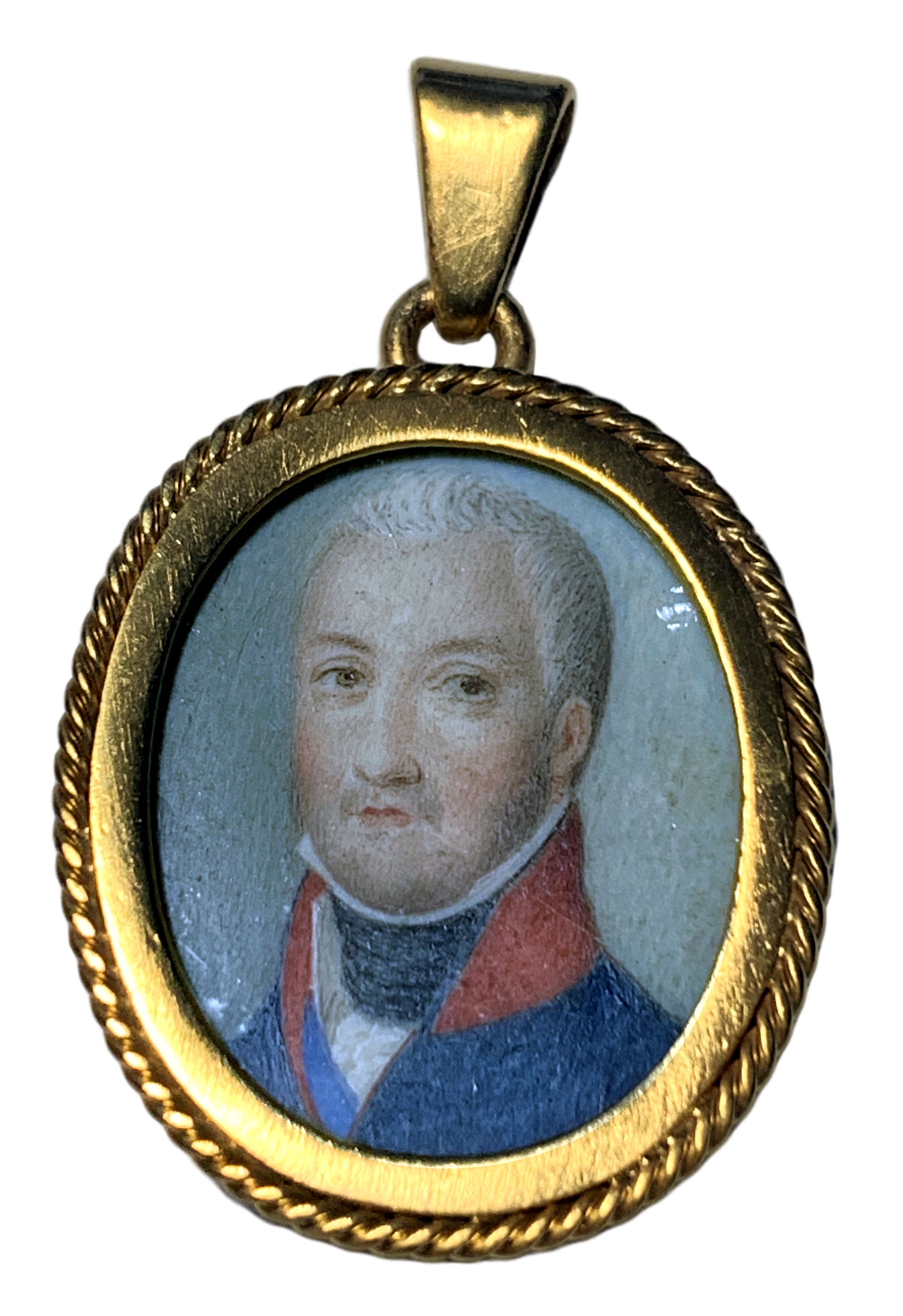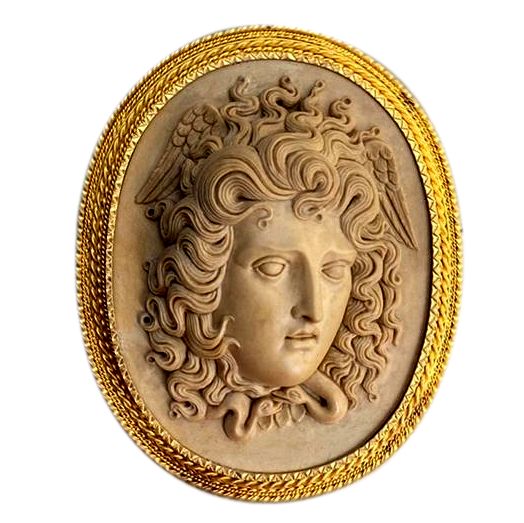 Image 1 of 4
Image 1 of 4

 Image 2 of 4
Image 2 of 4

 Image 3 of 4
Image 3 of 4

 Image 4 of 4
Image 4 of 4

Louise Philippe I and Maria Amalia
Pair of miniatures on ivory depicting Louis Philippe (1773-1850) Duke of Orleans future King of France (1830-1848) and his wife Maria Amalia of Bourbon-Two Sicilies (1782-1866), mounted as pendants within a case covered in burgundy silk velvet with the royal crown printed in gold.
Period: around 1809-1814
Dimension approximately 2.5 x 2 cm for the miniatures only.
Excellent condition, commensurate with age.
Pair of miniatures on ivory depicting Louis Philippe (1773-1850) Duke of Orleans future King of France (1830-1848) and his wife Maria Amalia of Bourbon-Two Sicilies (1782-1866), mounted as pendants within a case covered in burgundy silk velvet with the royal crown printed in gold.
Period: around 1809-1814
Dimension approximately 2.5 x 2 cm for the miniatures only.
Excellent condition, commensurate with age.
Pair of miniatures on ivory depicting Louis Philippe (1773-1850) Duke of Orleans future King of France (1830-1848) and his wife Maria Amalia of Bourbon-Two Sicilies (1782-1866), mounted as pendants within a case covered in burgundy silk velvet with the royal crown printed in gold.
Period: around 1809-1814
Dimension approximately 2.5 x 2 cm for the miniatures only.
Excellent condition, commensurate with age.
Maria Amalia Teresa of Naples and Sicily (26 April 1782 – 24 March 1866) was a French queen by marriage to Louis Philippe I, King of the French.
Maria Amalia was born on 26 April 1782 at the Caserta Palace just outside Naples. She was the tenth of eighteen children of Ferdinand I of the Two Sicilies and Maria Carolina of Austria.
As a young Italian princess, she was educated in the Catholic tradition, which she appears to have taken to heart. Maria Carolina, like her mother, Maria Theresa, made an effort to be a part of her daughter's life, though she was cared for daily by her governess, Vicenza Rizzi. As a child, Maria Amalia's mother and her aunt, Marie Antoinette, arranged for her engagement to Marie Antoinette's son, Louis Joseph, Dauphin of France, her cousin the future king of France. Her young fiancé died in 1789.
Maria Amalia faced chaos and upheaval from a young age. The death of her aunt Marie Antoinette during the French Revolution and her mother's subsequent dramatic actions emblazoned the event in her memory. During the outbreak of the French Revolution in 1789, the Neapolitan court was not hostile to the movement. When the French monarchy was abolished and her aunt Marie Antoinette and uncle Louis XVI were executed, Maria Amelia's parents joined the First Coalition against France in 1793. Although peace was made with France in 1796, by 1798 conflict again erupted and the royal family fled to the Kingdom of Sicily, leaving Naples on 21 December 1798 aboard HMS Vanguard, a British Royal Navy vessel protected by two Neapolitan warships. Maria Amalia spent the years 1800 to 1802 with her mother in Austria. In 1802, she finally returned to Naples with her mother. After the invasion of Naples by Napoleon in 1806, the royal family was once more forced to flee to Sicily, where they again settled in Palermo under the protection of British troops.
While in exile, Maria Amalia encountered her future husband, Louis Philippe d'Orléans, also forced from his home in France due to political complications of the French Revolution and the rise of Napoleon. Louis-Philippe's father, the previous Duke of Orléans, had been guillotined during the French Revolution, though he had advocated it in the early years.
The two were married in 1809, three years after they met in Italy, whereupon Marie-Amelie became Duchess of Orléans. The ceremony was celebrated in Palermo 25 November 1809. The marriage was considered controversial, because she was the niece of Marie Antoinette, while he was the son of a man who was considered to have played a part in the execution of her aunt. Her mother was skeptical to the match for the same reason, but she had given her consent after he had convinced her that he was determined to compensate for the mistakes of his father, and after having agreed to answer all her questions regarding his father.
Louis Philippe I (6 October 1773 – 26 August 1850) was King of the French from 1830 to 1848 and the last French king. As Duke of Chartres he distinguished himself commanding troops during the Revolutionary Wars, but broke with the Republic over its decision to execute King Louis XVI. He fled to Switzerland in 1793 after being connected with a plot to restore France's monarchy. His father Louis Philippe II, Duke of Orléans (Philippe Égalité) fell under suspicion and was executed, and Louis Philippe remained in exile for 21 years until the Bourbon Restoration. He was proclaimed king in 1830 after his cousin Charles X was forced to abdicate by the July Revolution. The reign of Louis Philippe is known as the July Monarchy and was dominated by wealthy industrialists and bankers. He followed conservative policies, especially under the influence of French statesman François Guizot during the period 1840–48. He also promoted friendship with Britain and sponsored colonial expansion, notably the French conquest of Algeria. His popularity faded as economic conditions in France deteriorated in 1847, and he was forced to abdicate after the outbreak of the French Revolution of 1848. He lived out his life in exile in the United Kingdom. His supporters were known as Orléanists, as opposed to Legitimists, who supported the main line of the House of Bourbon.






